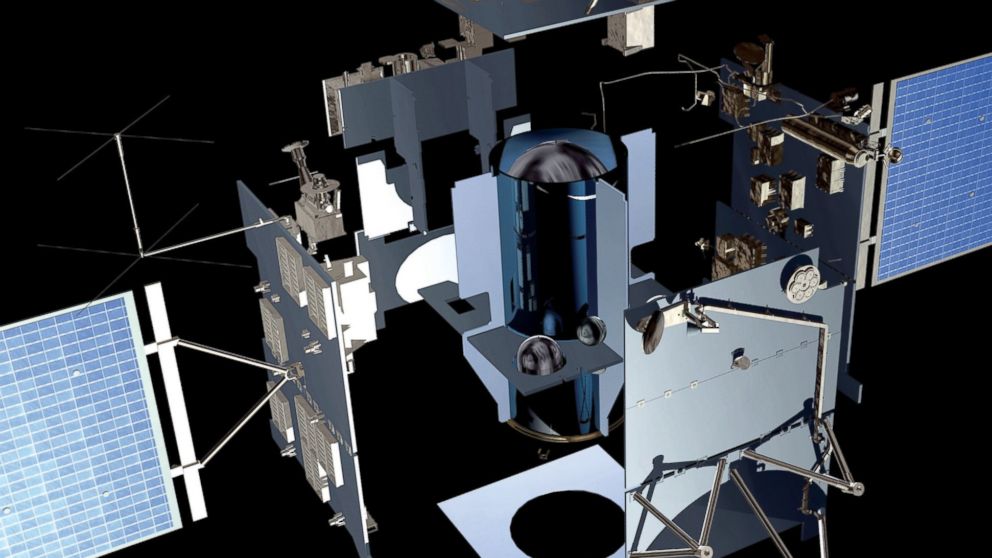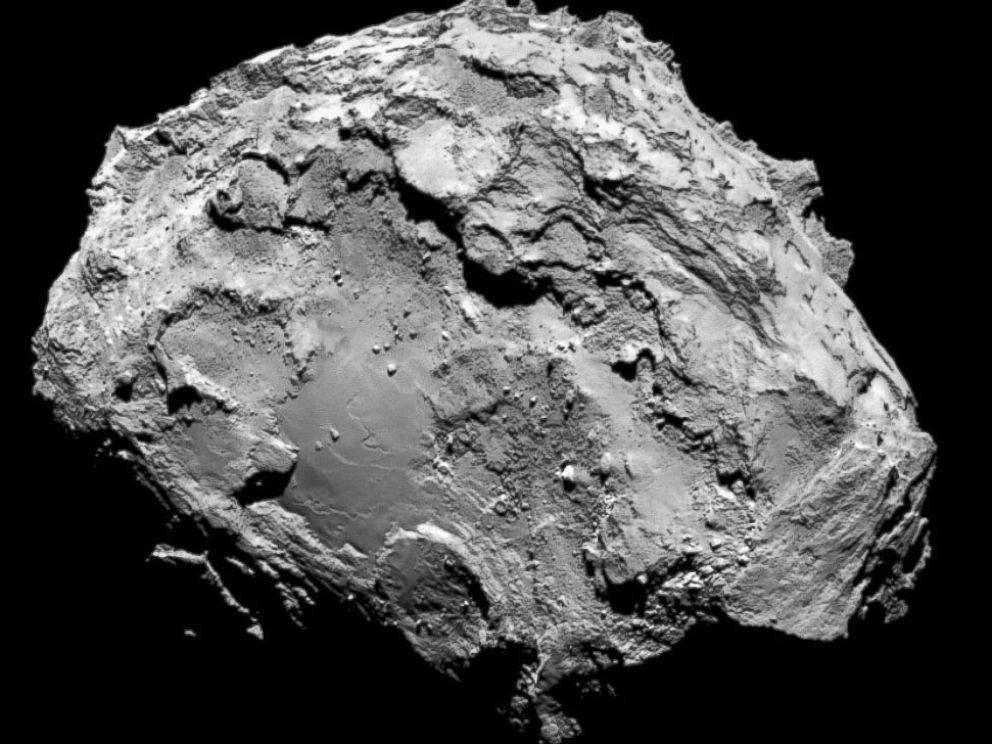Rosetta Spacecraft's Probe Set for Historic Landing
What scientists hope to learn from Philae, first spacecraft to land on a comet.

— -- When the Rosetta spacecraft attempts to land a probe on a comet next week, scientists at the European Space Agency will be watching closely to see if they can make history with the unmanned vessel.
The attempted landing next Wednesday, Nov. 12, at 10:35 a.m. ET, will be the culmination of a 10-year, 4 billion-mile journey to the Comet 67P/Churyumov-Gerasimenko. If the complex engineering feat is successful, NASA said it will be the first time a spacecraft has ever soft landed on a comet.
Once on the comet, Rosetta's lander, Philae, will shoot a harpoon into the porous surface, allowing it to fix itself to the comet.
"When it launched, its arrival date was so far in the future and now it is so exciting that we are actually getting there," Italian Astronaut Samantha Cristoforetti told ABC News. "It is incredibly exciting, a mission of firsts. There are so many things that have never been attempted before -- rendezvousing with a comet, attempting a landing."
Philae will then take and transmit the first-ever images of what a comet's surface looks like up close. The lander will also drill into the comet's surface to glean new insight into its composition.
Philae can remain active for two and a half days, according to NASA. Meanwhile, Rosetta will orbit the comet through the next year, gathering data on how the comet acts at different levels of exposure to the sun.

The 67P comet has an uneven shape, with that large lobe measuring about 2.5 miles in length, which could mean it is composed of two formerly separate objects or has experienced heavy erosion, scientists said.
The goal of the mission is to learn more about exploring the origins of comets, stars and planets.
Rosetta was launched in March 2004 from Europe's spaceport in Kourou, French Guiana. In January, the spacecraft "woke up" after a 31-month long hibernation period, tweeting "Hello World." Rosetta made history in August when it became the first probe to rendezvous with a comet as it journeyed around the sun. It has been in an elliptical orbit around the comet since then, with the closet point being about 18 miles.




